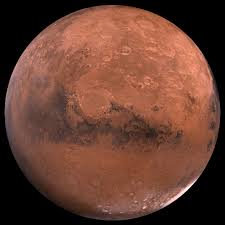Microbes can lie dormant for decades under Earth’s surface – and could be doing the same on Mars
Freak rains have exposed bugs that could indicate there’s life on Mars.
Scientists have found microbes that have been lying dormant in the soil for decades. Without water, they have entered into something like an incredibly deep sleep – until rains came and woke them back up.
The bugs had been living in the driest part of South America’s Atacama desert. But the same principle could apply on Mars, leading scientists to suggest that similar basic life could be hiding within its surface.
Planetary scientist Dr Dirk Schulze-Makuch, from Washington State University, said: “It has always fascinated me to go to the places where people don’t think anything could possibly survive and discover that life has somehow found a way to make it work.
“Jurassic Park references aside, our research tell us that if life can persist in Earth’s driest environment there is a good chance it could be hanging in there on Mars in a similar fashion.”
The researchers took soil samples from six different locations in the Atacama desert between 2015 and 2017.
Microbes had been found in the desert before, but it was not clear if they were original residents or dying vestiges of life blown in by the wind.
The answer came after an extremely rare rain shower triggered an explosion of biological activity.
Genetic tests revealed several indigenous species of bacteria that had adapted to live in the harsh environment.
A return trip to the Atacama in 2016 and 2017 revealed that the same bugs were gradually reverting to a dormant state as the soil around them dried up.
Dr Schulze-Makuch said: “In the past researchers have found dying organisms near the surface and remnants of DNA but this is really the first time that anyone has been able to identify a persistent form of life living in the soil of the Atacama desert.
“We believe these microbial communities can lay dormant for hundreds or even thousands of years in conditions very similar to what you would find on a planet like Mars and then come back to life when it rains.”
Billions of years ago Mars had oceans and lakes where early life forms may have thrived. As the planet dried up and grew colder, the Martian bugs could have survived in much the same way as their Atacama counterparts, the scientists believe.
“If life ever evolved on Mars, our research suggests it could have found a sub-surface niche beneath today’s severely hyper-arid surface,” Dr Schulze-Makuch added.
A European rover due to land on Mars in 2021 as part of the ExoMars mission will drill two metres into the soil to look for signs of life.
The findings are published in the journal Proceedings of the National Academy of Sciences.
The Independent
 Lebanese Ministry of Information
Lebanese Ministry of Information



